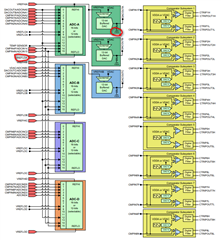Other Parts Discussed in Thread: TL431, OPA320, REF35
Hi Team,
Here're the descriptions of customer's ADC usage:
1. The reference voltage 3V is obtained through TL431, and the test reference voltage ripple Vpp of the oscilloscope is about 3.5mV;
2. Single-ended ADC mode, 12BIT, no post-processing;
3. I have tried setting ACQPS to 15, 64, 240, 500, etc., but there was no improvement;
4. The value of the series resistor Rs between the op amp and C2000 is 100 ohms, and the Cs capacitor has been used with 10nF and 100nF, etc., but there is no improvement;
5. Try the DAC output and test the DAC pin output voltage ripple Vpp about 3mV;
6. When testing the ADC pin value with an oscilloscope, the ripple Vpp is about 5mV;
7. VREFLO is connected to AGND on the circuit board;
The ADC input is a 1.5V DC signal (ripple within 5mV). The ADC is used to measure the three phase currents of the frequency converter. It uses a current sensor to convert the AC voltage into a signal with a bias of 1.5V and an amplitude of ±1.2V. The motor has not yet been connected during the debugging stage. Currently only a single ADC input is used.
+++++++++++++++++++++++++++
ADC input circuit:
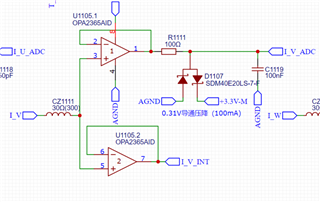
Reference voltage circuit:
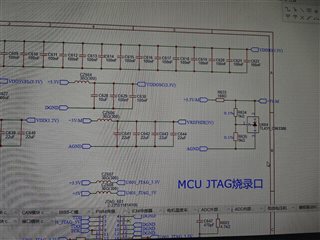
Reference voltage PCB trace:

Reference ground and analog ground are directly connected:
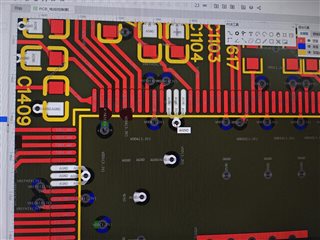
Detected unprocessed ADC value:
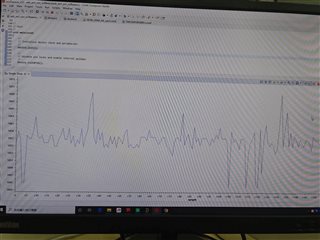
ADC pin voltage ripple:
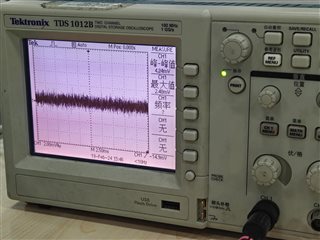
Another question: Will the sampling values obtained by different packages be very different?
--
Thanks & Regards


